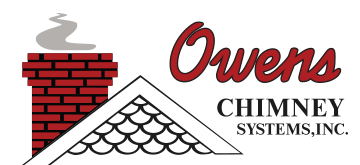
During your annual inspection, your certified sweep should answer any questions you may have about what they find.
Levels of Chimney Inspection
Having a fire inside a home or any enclosed space is dangerous due to the fire and smoke hazards to the building and personal health. It is good to know the inspection procedures and levels of inspection performed by chimney professionals. There are three levels of inspection when it comes to inspecting chimneys according to the Chimney Safety Institute of America (CSIA). Inspection is done to ensure safety of fireplace and chimney operation, but the procedures of the inspection become more in depth and involved with each level of inspection.
Level 1
Level 1 inspection is the most basic inspection of a chimney, but there is nothing basic about it. Routinely, a level 1 inspection will be conducted during annual evaluations and/or cleaning or sweeping and if the system is being maintained. The Level 1 inspection is limited to accessible portions of the fireplace/appliance and the chimney venting system. The flue is inspected to ensure proper operation and is free from blockage or restriction. This type of inspection is the most routine and if a chimney professional sees something not consistent for proper use can lead to a more detailed Level 2 inspection.
Level 2
A Level 2 inspection is routinely carried out when the use of the system is changing, when there was damage to the system, before a flue relining, or when a Level 1 inspection reveals the need a closer look. This type of inspection is also typical during the home inspection when buying or selling a home to protect the buyer and seller of chimney operation and if any repairs may be necessary. Level 2 inspection includes everything in Level 1 inspection, but other more inaccessible areas are inspected that might include the roof, the crawlspace, attics, basements, etc. Level 2 inspection will also include a video scanning of the chimney system and flue to reveal potential problems or issues. No property will be disturbed or destroyed while performing a Level 2 inspection.
Level 3
A Level 3 inspection must include both Level 1 and Level 2 inspection, but occurs only when Level 2 cannot reveal adequate information about the system to the chimney inspector. In these rare cases, parts of the system must be destroyed to gain access to these concealed areas that cannot be gained by other means.
